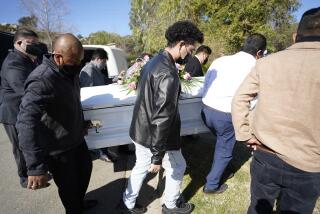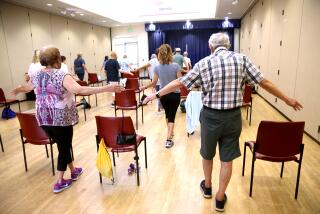Old Age Certainly Isn’t What It Used to Be
The doom and gloom that greets each new report about “the graying of the population” is unseemly and unwarranted. It’s good news, not bad, that people aren’t dying young anymore, and even better news that most Americans are remaining healthy and active into their 70s and beyond.
Old age isn’t what it used to be, but society is still unprepared to deal with what it’s becoming.
If we adjusted our discussion of age the way we adjust discussion of dollars--to keep the same meaning over time--we could base our policies and programs on reality: Americans are staying “young” longer than they used to, and becoming “old” much later in life.
Our debates on Social Security and education revolve around a set of boxes we have always grouped the population into, like “under age 18” or “65 and over.”
Those terms once defined the ages of dependency; now they reflect a departed era.
For example, when the Social Security system began, average life expectancy at birth was not even 62 years, and legislators originally proposed setting 70 as the age for collecting benefits. But unemployment was so high during the Great Depression that 65 was eventually chosen to free up some jobs for younger workers.
Similarly, most 18-year-olds at the time were already independent of their parents. Today, most young Americans don’t take on the major adult roles of financial independence, marriage or parenthood until they are 25 or older. In March 1999, 60% of the civilian population 18 to 24 was living with parents or other relatives.
Just as adulthood comes later in life, so too does “old age.”
Consternation at the news of more people living longer reflects a common assumption that it just means more time for them to be sick and a burden to the young. This may be the case in some developing countries where aging populations are growing in a context of inadequate education and health care, weak economies, poverty and political instability. But in the United States, research from Duke University suggests that healthy life expectancy is growing just as fast as life expectancy--and this pattern is repeated throughout the developed world.
The additional time that Americans who reach 65 can expect to live has increased from about 12 years in 1900 to nearly 18 years in 1999--16 years for men, 19 years for women--and is projected to increase even more in the 21st century.
As recently as 1970, the census lumped all people 65 and older into a single population, but demographers now divide them into multiple age groups with an array of different needs and resources.
Measured in terms of what people can actually do, physically and mentally, each new generation reaching 80 over the past two decades has been less infirm than its predecessor. This new standard of energy and vitality is based as much on better education about staying healthy as it is on medical advances, and it seems to have pushed the standard condition of “old age” well into the 70s and beyond.
The problem we now face is that this rosier sunset has mostly occurred since 1960, so that Americans still cling to stereotypes based on the past.
Instead of bemoaning the growth of the older population, Americans--both individuals and institutions--need to revise their assumptions about what “old” means.
We already are seeing that work life neither starts nor ends at the same ages for everyone.
Assumptions that people will spend their entire work life in one occupation or that career ladders can only be climbed in one direction seem ill-suited to a potentially longer and much more varied career.
Some people already are thinking outside the age boxes.
Builders are redesigning houses originally meant for families raising children to suit people who now want to live in a house of their own until they are truly not capable of doing so.
The concept of youth hostels has been extended to elder hostels, so younger older people can combine traveling with learning.
Enlightened employers are finding that older people’s experience and established work habits often make them better job candidates than those who are younger.
But until we tackle our own ageism prejudices and youth-centered assumptions about what we can do for ourselves and what we need others to do for us, we will not make the best decisions on policies affecting both ends of our lives. The debate on what to do about Social Security is just the first step.
More to Read
Sign up for Essential California
The most important California stories and recommendations in your inbox every morning.
You may occasionally receive promotional content from the Los Angeles Times.










